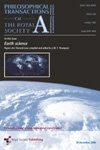Two technologies have dominated efforts to harness the power of the sun's energy. Photovoltaics convert sunlight into electric current, while solar-thermal power generation uses sunlight to heat water and produce thermal energy. Photovoltaic cells have been deployed widely as flat panels, while solar-thermal power generation employs sunlight-absorbing surfaces feasible in residential and large-scale industrial settings.
Because of limited material properties, solar-thermal devices have so far failed to economically generate enough electric power. The team has introduced two innovations — a better light-absorbing surface through enhanced nanostructured thermoelectric materials, which was then placed within an energy-trapping, vacuum-sealed flat panel. Combined, both measures added enhanced electricity-generating capacity to solar-thermal power technology, as reported by Zhifeng Ren, a Boston College professor of physics and a co-author of the study. The team is comprised of Gang Chen, MIT's Soderberg professor of power engineering; Boston College and MIT graduate students; and researchers at GMZ Energy, a Massachusetts clean energy research company founded by Ren and Chen.
Ren claims that their team has developed a flat panel that is a hybrid capable of generating hot water and electricity in the same system," he said. "The ability to generate electricity by improving existing technology at minimal cost makes this type of power generation self-sustaining from a cost standpoint."
Their technology involves using nanotechnology engineering methods. The researchers combined high-performance thermoelectric materials and spectrally selective solar absorbers in a vacuum-sealed chamber to boost conversion efficiency.
The findings open up a promising new approach that has the potential to achieve cost-effective conversion of solar energy into electricity, an advance that should affect the rapidly expanding residential and industrial clean energy markets, claims Ren who further comments, "Existing solar-thermal technologies do a good job generating hot water. For the new product, this will produce both hot water and electricity," he said. "Because of the new ability to generate valuable electricity, the system promises to give users a quicker payback on their investment. This new technology can shorten the payback time by one-third."
Solar-Thermal Flat Panels Generate Electricity
All My Pages
Where my visitors are
A380's TRENT XWB
Materials Science and Engineering, Durable Development, Recycling..

Custom Search
Blog List-Free Science and Engineering Information Resources cf also Side and Bottom menu bars
-
-
Research Headlines - Motoarele cu ardere internă au un viitor luminos datorită aprinderii cu laser - [image: Image]Până să devină practice și tuturor accesibile mașinile electrice și alte inovații energetice, va mai fi larg folosit motorul cu ardere, rezul...4 years ago
-
Research Headlines - Inteligentne miasta zorientowane na obywateli - [image: Image]Dzięki technologiom IT usługi miejskie mogą być bardziej wydajne, dostępne i przyjazne dla środowiska. By takie rozwiązania były efektywne, m...4 years ago
-
Research Headlines - En route to safer, more reliable autonomous driving - [image: Image]The development of autonomous driving systems is currently a focus of research for the automotive industry. An EU-funded project has moved wo...4 years ago
-
Instant Inflation Systems for Stand-Up Paddle Boards - Inflatable Stand-Up Paddles (SUP) have provided great flexibility to enthusiasts and allowed the sport to grow in popularity. However, manually or electr...6 years ago
-
The List of Online and Free Access Journals about Metallurgy , Mining - The List of Online and Free Access Journals about Metallurgy and Mining RKOJ = Related Keywords of the Journal Open Mineral Processing Journal RKOJ: ...15 years ago
-
-
Scientific Reports - nature.com science feeds
Physical sciences : nature.com subject feeds
Materials science : nature.com subject feeds
Thursday, 2 June 2011
Subscribe to:
Post Comments (Atom)






















No comments:
Post a Comment